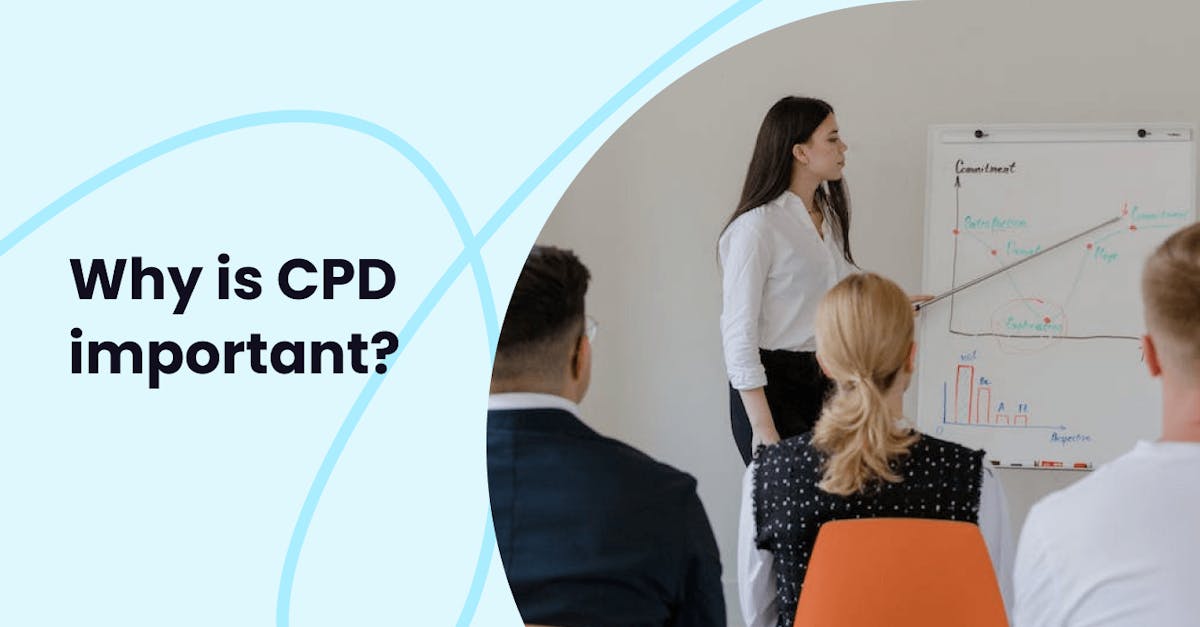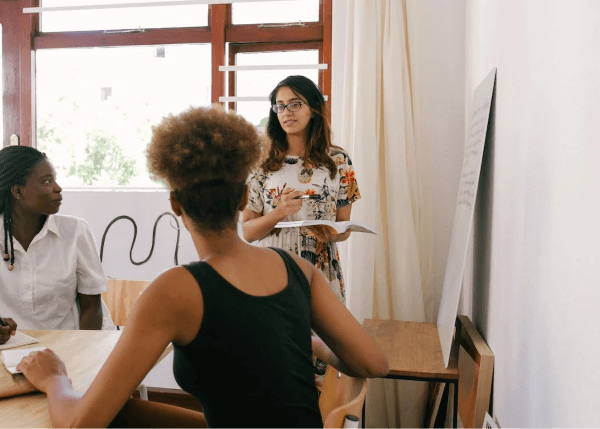Why is CPD important? Key insights for employers and training managers

Your employees are the backbone of your organization, keeping everything running smoothly. Their skills and knowledge play an important role in achieving your goals, which is why investing in their career growth and development is so important. In this article, we'll explore how Continuing Professional Development (CPD) can help you do just that, and why it's essential for both your employees and your organization.
What is Continuing Professional Development (CPD)?
Continuing Professional Development or CPD is the ongoing process of learning, training, and development. It helps professionals keep their knowledge, skills, and abilities up-to-date with the ever-changing industry trends, technologies, and best practices. The main idea behind CPD, basically, is to support your employees' growth to get better at the things they do at work, so they don't fall behind the competition.

CPD can take many forms, such as attending courses, workshops, seminars, conferences, webinars, or engaging in self-directed learning. These activities can be customized to your employees' individual needs and learning styles.
Why Continuing Professional Development (CPD) is important?
Now that we’ve defined what CPD is, let’s talk about why CPD is important. In fast-paced industries, keeping up with the latest trends and developments is key to staying competent and effective in your role. This is where CPD comes into the picture. It helps your employees to achieve this goal, giving them the opportunity to learn new skills and knowledge so they can meet the changing demands of the business world.

But CPD isn't just good for your employees - it's good for your company too. One of the most significant benefits is the improvement in your staff retention and engagement. Investing in CPD proves that your company’s committed to supporting your employees’ career growth and skill development. This can result in increased loyalty and lower turnover rates.
Plus, CPD makes sure that your organization stays compliant with industry standards and regulations. Many professions have mandatory CPD requirements to maintain a license or certification. Prioritizing CPD will give you peace of mind knowing that your workforce meets these requirements.
3 key types of CPD
Here, we’ll dive deeper into the world of CPD and explore its three main types.
Formal CPD
Formal CPD, also known as Structured CPD, refers to structured learning activities like workshops, seminars, or conferences. The programs under this CPD type are typically offered in partnership with recognized educational institutions or professional bodies and are pretty organized and comprehensive. The best part is that they can lead to formal qualifications, such as a degree, certification, or license.
Informal CPD
Informal CPD, unlike its formal counterpart, involves a more flexible approach to learning. It can be self-directed, and the learning outcomes don’t necessarily have to be directly related to your employees’ line of work. This type of learning can include attending conferences, reading books or articles, participating in online forums, or even just learning from their colleagues.
Reflective CPD
Reflective CPD is based on the idea that by reflecting on past events and learning from them, one can enhance their future performance. It can take many forms, from journaling and recording self-assessments to seeking feedback from colleagues or mentors. Engaging your team in a reflective CPD will help them better identify areas for improvement, build on their strengths, and develop a better understanding of their own learning and development needs.
How to write a CPD plan for your employees
Creating a CPD plan for your employees is a great way to record their current skill sets and certain areas that can be improved. It can also be used to keep track of their learning progress over time and make sure that they’re reaching the goals they set for themselves.

In some cases, employees are responsible for creating their own CPD plan. But, if you're considering creating one for them, here are a few steps you can take.
Step #1 - Identify their learning needs
Sit down with your team and ask them directly what areas or skills they’d like to see develop over time. Alternatively, you can also conduct a skills gap analysis or performance review to identify areas for improvement.
Step #2 - Set goals
After identifying your team’s learning needs, help them define their learning goals and objectives. Take into account their strengths and weaknesses, career path, as well as your organizational needs.
It might also be helpful to follow the SMART (Specific, Measurable, Achievable, Realistic, and Timely) goal-setting process to make their goals achievable.
Step #3 - Choose the right CPD activities
Once your employees have set their developmental goals, the next step is to select appropriate CPD activities. It’s important that these activities are aligned with their learning objectives.
To do so, consider asking yourself these questions: what courses, programs, and resources do your employees need to hit their career goals? Or, what type of training and activity fits their learning style?
Step #4 - Monitor progress
It can’t be stressed enough how important it is to regularly review and evaluate your team’s progress as they start following their CPD plan. Use this as an opportunity to spot any potential roadblocks or challenges they may be facing, and give them additional support moving forward.
This step will also help you evaluate the effectiveness of your CPD plan. If the plan and activities are not working, this can be your chance to make necessary changes to improve them.
CPD training for your employees
Engaging your team in CPD training is the best way to upskill your staff and help them expand their knowledge in certain areas. You can organize these programs periodically and at regular intervals based on your team's needs.

When it comes to employee training, you've got choices. You can go old school and opt for traditional instructor-led training, where everyone's in the same room learning from an expert. Or, you can go the modern route and choose online CPD training.
The latter is becoming more popular because it allows your employees to participate even when they're not physically present. EdApp, an award-winning learning management system (LMS) can help you deliver online CPD training quickly and easily. Among its key features include its creator tool, where you can create beautiful and engaging courses without having to go through any tricky authoring process.

This platform also takes pride in its course library where you’ll find hundreds of training courses that you can include in your CPD training. We recommend taking our course, Creating a Positive Customer Experience, as it has been CPD-certified. We have more CPD-certified courses coming to our Course Library very soon.

If you’d rather have a custom-made CPD training course for your team, you can also work with EdApp’s team of instructional designers. On top of the latest learning trends, you can expect high-quality, engaging training programs that’ll help your team improve their skills and knowledge faster than ever before. They’ll love the customized training, and you'll see the positive impact on their performance.
Start your CPD training and help your team achieve their career goals with EdApp.
Author
Jen Avelino
Jen is a learning expert at EdApp, a mobile-based training platform that helps corporates and businesses bring their training solutions to the next level. She carries an extensive writing experience in a variety of fields, including architecture, the gig economy, and computer software. Outside of work, she enjoys her free time watching her favorite series and documentaries, reading motivational books, and cross-stitching.
